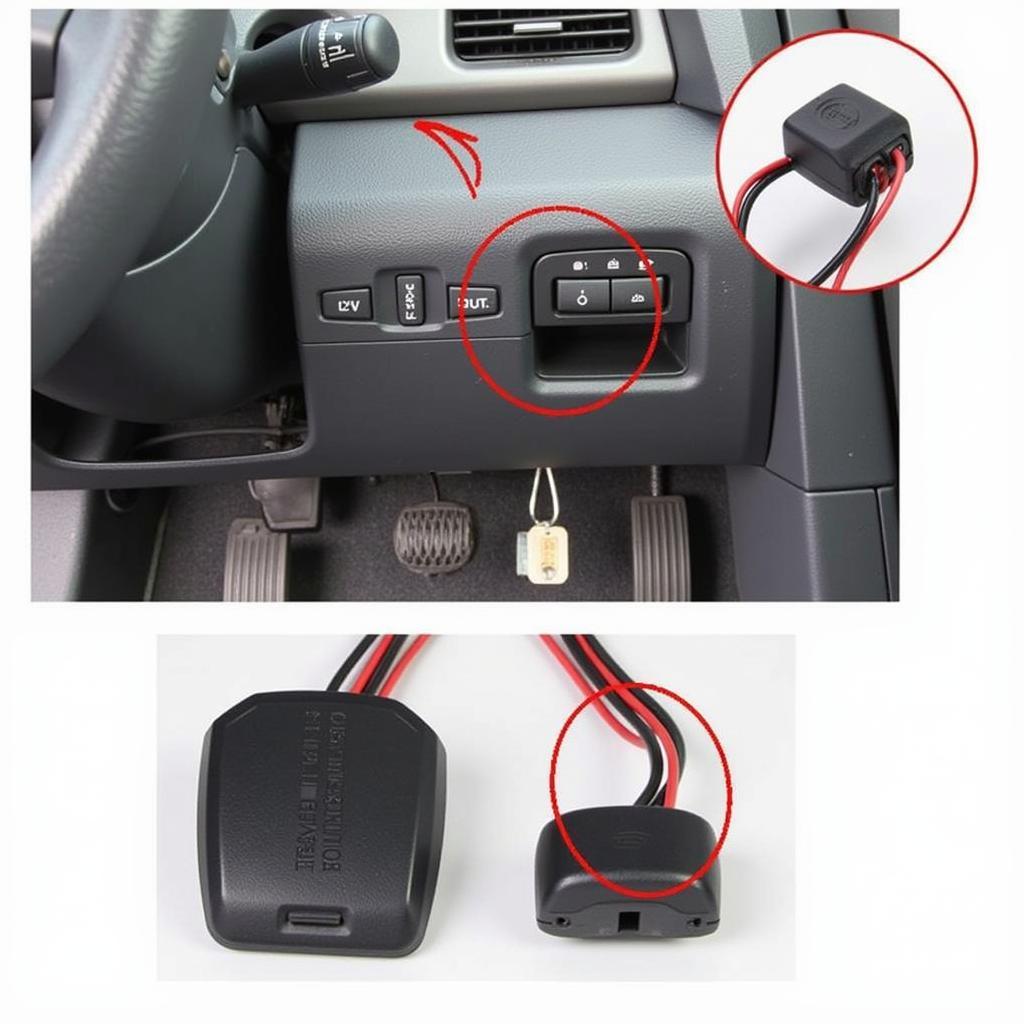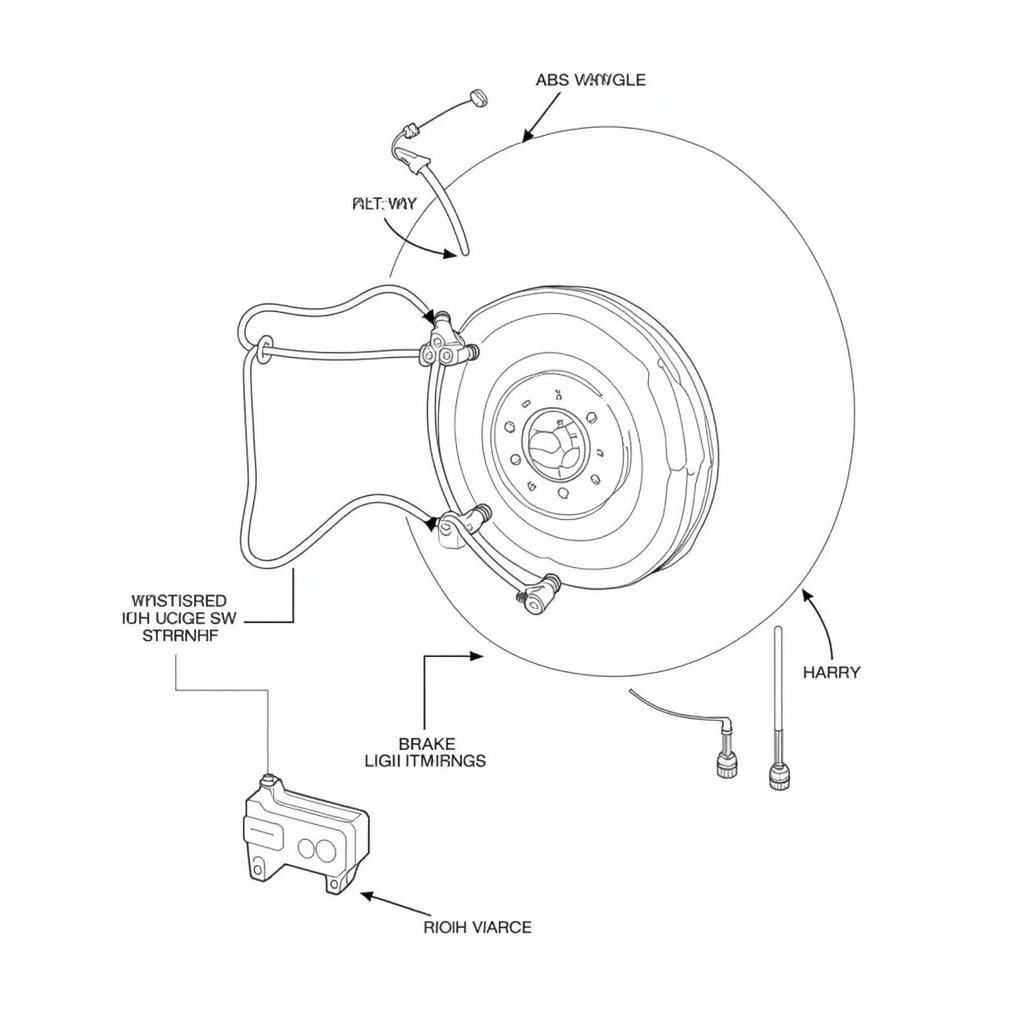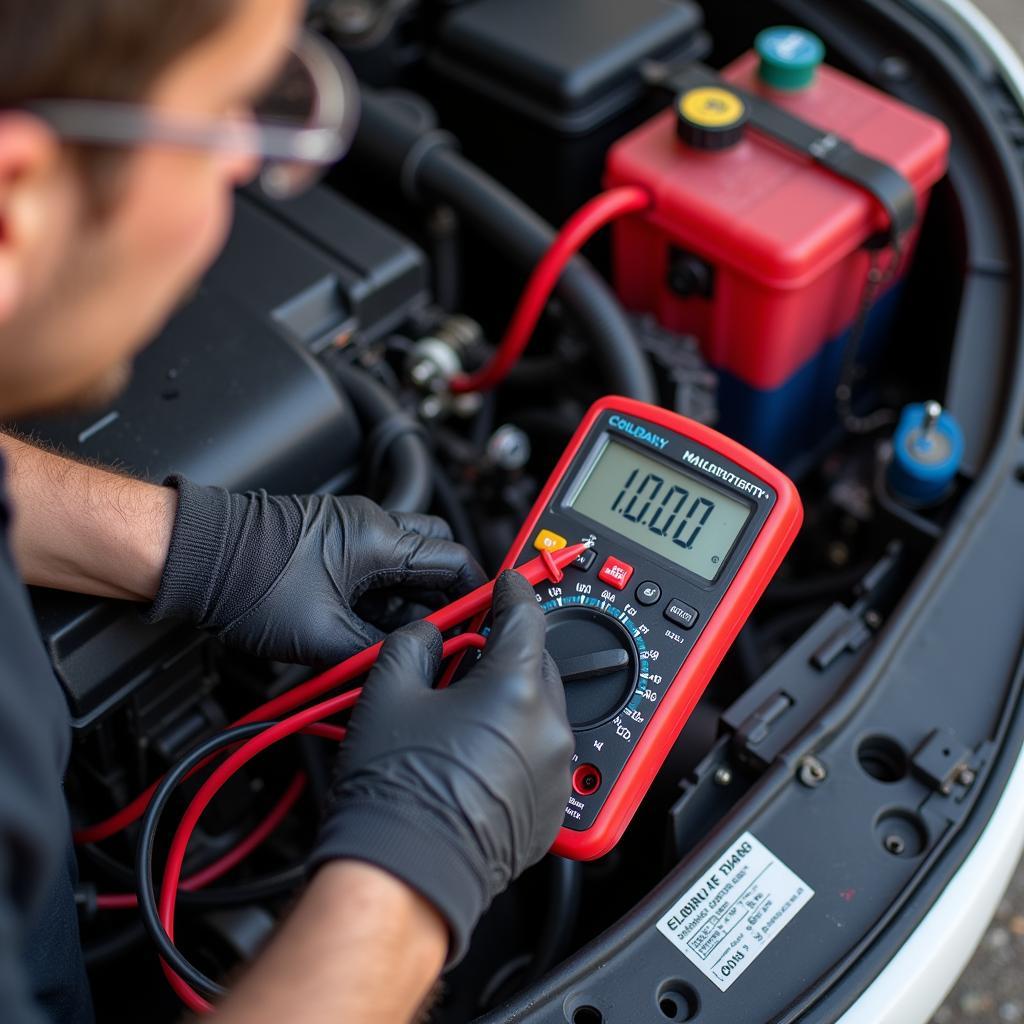The 2014 Hyundai Accent brake light warning can be a frustrating issue, but understanding the potential causes and solutions can save you time and money. This guide provides comprehensive troubleshooting steps, from simple checks to more advanced diagnostic techniques, helping you address this warning light effectively.
Understanding the Brake Light Warning
The brake light warning on your 2014 Hyundai Accent illuminates when there’s a problem with the braking system. This could range from a simple blown bulb to more serious issues like a faulty brake switch or low brake fluid. Ignoring this warning can compromise your safety and the safety of other drivers.
Common Causes of a 2014 Hyundai Accent Brake Light Warning
Several factors can trigger the brake light warning on your 2014 Hyundai Accent. Let’s explore some of the most common culprits:
- Burnt-out Brake Light Bulbs: This is the most frequent cause. Brake light bulbs have a limited lifespan and can burn out over time.
- Faulty Brake Light Switch: The brake light switch activates the lights when you press the brake pedal. A malfunctioning switch can prevent the lights from working correctly.
- Low Brake Fluid: Low brake fluid can indicate a leak in the braking system, which is a serious safety concern.
- Blown Fuse: A blown fuse in the brake light circuit can disrupt the power supply to the lights.
- Wiring Issues: Damaged or corroded wiring can prevent the brake lights from receiving power.
Troubleshooting the Brake Light Warning
Here’s a step-by-step guide to help you troubleshoot the brake light warning on your 2014 Hyundai Accent:
- Check the Brake Light Bulbs: Inspect all brake light bulbs for signs of burning or damage. Replace any burnt-out bulbs.
- Inspect the Brake Light Switch: Locate the brake light switch (usually above the brake pedal) and check for any signs of damage or loose connections. If necessary, replace the switch.
- Check the Brake Fluid Level: Open the hood and locate the brake fluid reservoir. Ensure the fluid level is within the recommended range. If it’s low, top it off and check for leaks.
- Check the Fuses: Consult your owner’s manual to identify the fuse responsible for the brake lights. Inspect the fuse for any signs of burning or damage. Replace if necessary.
- Inspect the Wiring: Examine the wiring connected to the brake lights for any fraying, corrosion, or damage. Repair or replace any faulty wiring.
 Checking the 2014 Hyundai Accent Brake Light Switch
Checking the 2014 Hyundai Accent Brake Light Switch
When to Seek Professional Help
If you’ve tried the above troubleshooting steps and the brake light warning persists, it’s crucial to seek professional help. A qualified mechanic can diagnose and repair more complex issues, such as ABS module problems or other electronic malfunctions.
“A brake light warning should never be ignored,” says automotive expert, Michael Davies, ASE Certified Master Technician. “Even seemingly minor issues can lead to significant safety risks if left unattended.”
Remote Diagnostics and Software Solutions
In some cases, the brake light warning might be triggered by software glitches in the vehicle’s electronic control units (ECUs). Remote diagnostics and software programming can sometimes resolve these issues without requiring a physical visit to a repair shop.
 2014 Hyundai Accent Brake System Diagram
2014 Hyundai Accent Brake System Diagram
Conclusion
The 2014 Hyundai Accent brake light warning shouldn’t be taken lightly. By following the troubleshooting steps outlined in this guide, you can often identify and resolve the issue yourself. However, for more complex problems, don’t hesitate to consult a qualified mechanic. Addressing the brake light warning promptly ensures your safety and the proper functioning of your vehicle’s braking system.
FAQ
-
What does the brake light warning light mean? It indicates a problem within the braking system, ranging from a burnt-out bulb to more serious issues.
-
Can I drive with the brake light warning on? It’s not recommended. A malfunctioning braking system can be dangerous.
-
How much does it cost to fix a brake light warning? The cost varies depending on the cause. Replacing a bulb is inexpensive, but more complex repairs can be costly.
-
How do I check my brake fluid? Locate the brake fluid reservoir under the hood and check if the fluid level is within the marked range.
-
What is a brake light switch? It’s a switch activated when the brake pedal is pressed, turning on the brake lights.
-
Can remote diagnostics fix a brake light warning? In some cases, yes. Software glitches can sometimes be resolved remotely.
-
What should I do if I’ve tried everything and the warning light is still on? Consult a qualified mechanic for professional diagnosis and repair.

